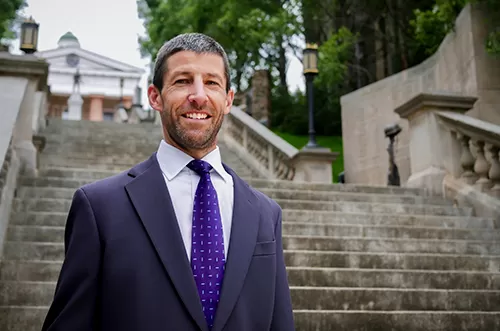Mt. Valley Pipeline, LLC v. Easements to Construct, Operate, & Maintain a Natural Gas Pipeline, 2018 U.S. Dist. LEXIS 15724, 2018 WL 648376 (W.D. Va. Jan. 31, 2018)
Mt. Valley Pipeline, LLC v. Easements to Construct, Operate, & Maintain a Nat. Gas Pipeline, 2018 U.S. Dist. LEXIS 34487, 2018 WL 1144387 (W.D. Va. Mar. 2, 2018)
Mt. Valley Pipeline, LLC v. Easements to Construct, Operate, & Maintain a Nat. Gas Pipeline over Tracts of Land in Giles Cty., 2018 U.S. Dist. LEXIS 36951, 2018 WL 1193021 (W.D. Va. Mar. 7, 2018)
Mt. Valley Pipeline, LLC v. Easements to Construct, Operate, & Maintain a Nat. Gas Pipeline, 2018 U.S. Dist. LEXIS 75780, 2018 WL 2088762 (W.D. Va. May 4, 2018)
Mt. Valley Pipeline, LLC v. Easements to Construct, 2018 U.S. Dist. LEXIS 81337 (W.D. Va. May 15, 2018)
Mt. Valley Pipeline, LLC v. Easements to Construct, Operate, & Maintain a Nat. Gas Pipeline, 2018 U.S. Dist. LEXIS 88605 (W.D. Va. May 28, 2018)
Flora v. Mt. Valley Pipeline, LLC, 2018 US Dist. LEXIS 130697; 2018 WL 3715761 (W.D. Va. Aug. 3, 2018)
Sierra Club v. United States Forest Serv., 897 F.3d 582 (4th Cir. July 27, 2018)
Sierra Club v. State Water Control Bd., 898 F.3d 383 (4th Cir. Aug. 1, 2018)
Case citations related to the following are listed above.
The Mountain Valley Pipeline Project (the "Pipeline") is a proposed interstate underground natural gas transmission pipeline that will be approximately 303.5 miles long, 42 inches in diameter, and will transport natural gas from Wetzel County, West Virginia, to Pittsylvania County, Virginia. Approximately 106 miles of the Pipeline will be located in Virginia, and constructing the Pipeline requires 385 stream crossings and 144 wetland crossings in Virginia. Mountain Valley Pipeline, LLC ("MVP") proposed to construct, operate, and maintain the Pipeline. MVP’s Pipeline construction would require a 125-foot-wide right-of-way in uplands and a 75-foot-wide right-of-way through wetlands. After construction, MVP would retain a permanent 50-foot-wide right-of-way to operate the Pipeline. Overland construction also involves removing trees, shrubs, brush, roots, rock fracturing or blasting where necessary, and then dig a trench 54 inches wide and 5.5 to 9 feet deep. Waterbody crossings would be dry open-cut crossings; MVP would temporarily divert the water from the construction area and bury the pipeline two to four feet below the streambed.
Under the Natural Gas Act (“NGA”), Congress delegates its eminent domain power to the Federal Energy Regulatory Commission (“FERC”). Any party seeking to build, operate, and maintain a natural gas pipeline must obtain a certificate of public convenience and necessity (a “Certificate”) from the FERC. The FERC’s issuance of a Certificate conveys and automatically transfers the power of eminent domain to the Certificate holder (i.e. a private natural gas company). With the transferred power of eminent domain, a Certificate holder can then initiate condemnation proceedings in the appropriate federal district court or state court. To challenge the FERC’s issuance of a Certificate, an aggrieved party must file a petition for a rehearing with the FERC. The FERC may delay its decision on the petition by issuing a tolling order. If the FERC either declines to rehear the matter or issues a final order upon the petition for a rehearing, the aggrieved party must then petition for review in the United States Court of Appeals for the circuit in which the natural gas pipeline is or will be located, which has exclusive jurisdiction to affirm, modify, or set aside the final order in whole or part. As such, an aggrieved party may not challenge the FERC’s issuance of a Certificate in federal district court or state court even though the Certificate holder’s condemnation proceedings are pending before a federal district court or state court.
Pursuant to the National Environmental Policy Act (“NEPA”), when the FERC receives a Certificate application, it must act as lead agency in preparing an Environmental Impact Statement (“EIS”), which describes the likely environmental effects, adverse environmental effects which cannot be avoided, and potential alternatives to the proposal. In addition, MVP had to obtain approval from the U.S. Army Corps of Engineers (the “Army Corps”) under Section 404 of the Clean Water Act (“CWA”), Virginia’s State Water Control Board (the “Board”), and Virginia’s Department of Environmental Quality (“DEQ”). Because the Pipeline crosses federal land, MVP also had to obtain right of ways and temporary use permits from the Bureau of Land Management (“BLM”), which required an amendment to the Land Resource Management Plan for the Jefferson National Forest (the “Jefferson Forest Plan”) by the United States Forest Service (“Forest Service”). To challenge the issuance of a Certificate under the NGA, an aggrieved party must first file for a rehearing before the FERC, which issued the Certificate. If the FERC either declines to rehear the matter or issues a final order upon rehearing the matter, an aggrieved party may only file for a review in the appropriate court of appeals, which has “exclusive” jurisdiction to affirm, modify, or set aside the FERC’s final order in whole or part.
On October 23, 2015, MVP filed an application for a Certificate. On April 7, 2017, the Board issued its certification, concluding that the requisite criteria had been satisfied (the “April 401 Certification”). In June of 2017, the DEQ approved MVP’s standards and specifications for the Pipeline and the FERC issued its final EIS. On Friday, October 13, 2017, the FERC issued a Certificate to MVP. On December 1, 2017, the Forest Service issued a Rule of Decision (“ROD”) that simultaneously approved the Pipeline and amended the Jefferson Forest Plan. Because of the DEQ’s May 19, 2017 “2017 Guidance Document,” the Board issued a new and final certification with additional conditions on December 8, 2017 (the “December 401 Certification”). On December 20, 2017, the BLM issued a ROD that adopted the FERC’s EIS and granted MVP right of ways and associated permits. On December 26, 2017, the Army Corps verified that MVP could rely on “Nationwide Permit 12 (“NWP 12”) for its stream crossings. On January 22, 2018, the FERC began issuing notices to proceed to MVP for the construction of the Pipeline.
Thereafter, MVP filed an action in federal district court seeking to condemn portions of almost 300 properties under the eminent domain power granted to MVP through the Certificate for temporary and permanent easements along the FERC approved path for the Pipeline (the “Easements”). The district court dismissed the landowners’ challenges to the Pipeline and the constitutionality of the MVP’s right to condemn properties via the eminent domain power granted to MVP through the Certificate because the NGA provides that an aggrieved party can only challenge the issuance of a Certificate by petitioning for a rehearing before the FERC and thereafter appealing the FERC’s decision to the court of appeals (i.e. the Fourth Circuit Court of Appeals). By opinion and order entered on January 31, 2018, the district court conditionally granted MVP immediate possession of the condemned properties, but required MVP to produce sufficient security to pay the fair market value of the condemned properties. Thereafter, a number of landowners and protestors began “tree-sitting” along the proposed pipeline route to prevent MVP from proceedings with the work, which prompted a series of motions by MVP to hold the landowners and “tree-sitters” in contempt of court.
In addition to the foregoing, a number of lawsuits were filed in the Fourth Circuit Court of Appeals against the MVP, FERC, Forest Services, BLM, Board, DEQ, and Army Corps, alleging various improprieties in the eminent domain proceedings, the environmental assessments, and constitutional violations. In effect and for the time being, the Fourth Circuit Court of Appeals has affirmed the procedures set forth in the NGA for challenging the FERC’s issuance of a certificate, but has stopped MVP’s construction of the Pipeline because of the following:
• The Forest Service acted arbitrarily and capriciously in adopting the sedimentation analysis in the FERC’s EIS, which adopted an earlier draft of MVP’s “Hydrological Analysis of Sedimentation” that the Forest Service had previously expressed graves concerns;
• The Forest Service’s 2012 regulation required amendments to the Jefferson Forest Plan be consistent with the Forest Service NEPA procedures (the “Planning Rule”), which was clarified in 2016 to mean that the Forest had to determine which specific substantive requirements within §§ 219.8 through 219.11 are directly related the Jefferson Forest Plan being added, modified, or removed by the amendment. Because soil, water, and riparian resources are directly related to the purpose of the Jefferson Forest Plan, the Court held that the Forest Service acted arbitrarily and capriciously in concluding otherwise and remanded the matter to the Forest Service for a proper application of the Planning Rule soil and riparian requirements to the Jefferson Forest Plan amendment; and
• Vacated the BLM’s decision regarding right of way permits because the BLM never decided that utilization of an existing right of way would be impractical, and remanded the matter the BLM for consideration of the Mineral Leasing Act’s preference for utilizing existing right of ways.




